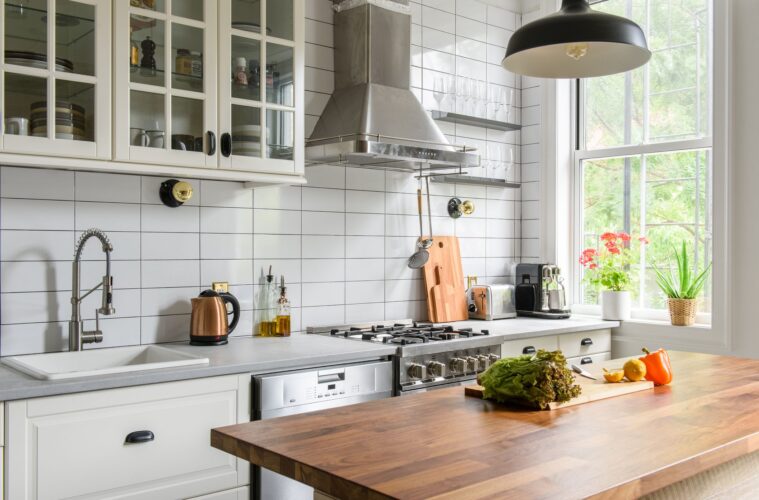Tile backsplashes can be a terrific way to add style to your house. They may also pick up a range of tough stains from cooking and washing dishes. Here are some quick methods for removing dirt and grime from your kitchen backsplash tile.
With cooking oil and food remains, keeping your backsplash tiles clean might feel like an endless task. Because of cooking spatter, tiles near the stove appear to have the most food muck on them. Ceramic, glass, and metal backsplash tiles are popular backsplash materials, and they’re reasonably simple to clean with everyday household goods. Keep up with tile cleaning to make the work simpler before it becomes too daunting.
Time Saving Cleaning Tips: Kitchen Backsplash Tiles
The Power Of Soap & Water
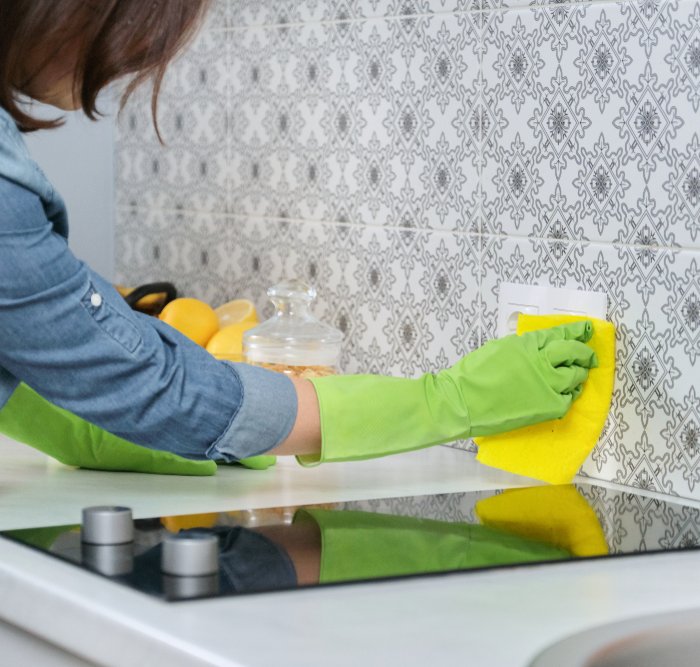
source: pinterest.com
Many items in your kitchen can be cleaned with soap, water, and a textured sponge. Soap molecules are both water-loving hydrophilic and water-hating hydrophobic, making them ideal for dissolving grease, trapping it in water, and cleaning it away.
Baking Soda Key To Remove Grease
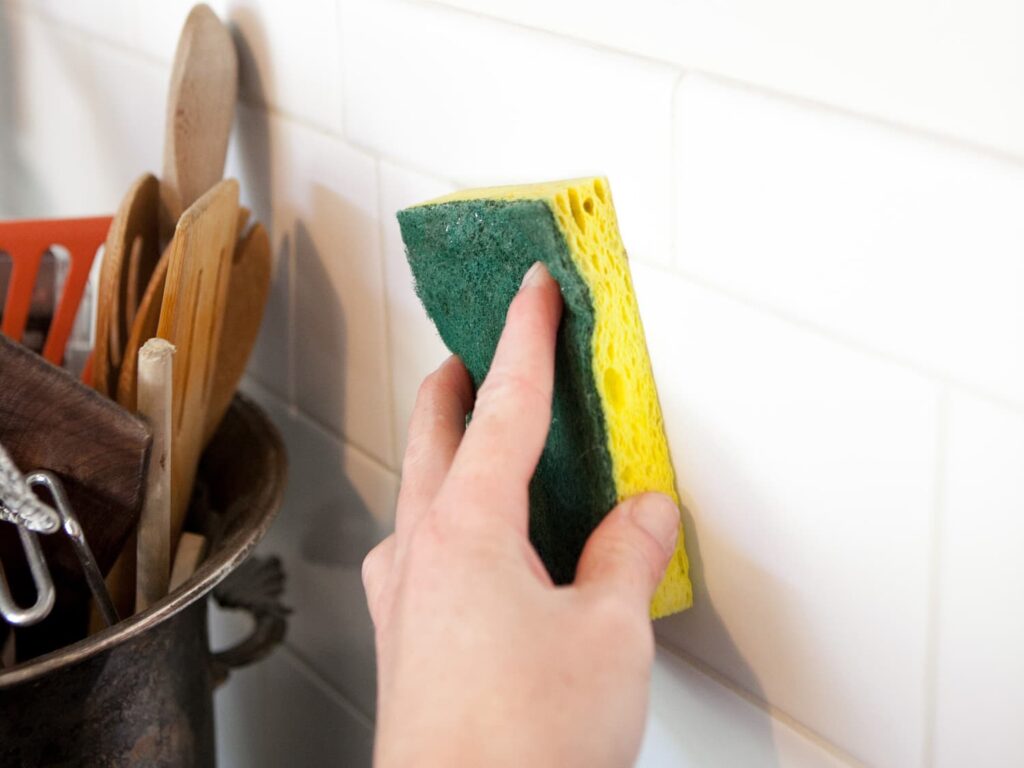
source: apartmenttherapy.info
If you have greasy stains all over your stove or kitchen sink from cooking great meals, a gentle caustic like baking soda will gently scrub them away.
Combine a tiny amount of baking soda and water. Fill a basin halfway with dry baking soda and add a little volume of water until you get a paste runny enough to cling to the wall tiles.
Let this solution remain in your greasy places for around 10 minutes. After 10 minutes, take a clean sponge or towel, soak it with water, and gently scrape away the baking soda and grease.
Vinegar Backsplash Tiles Cleaner
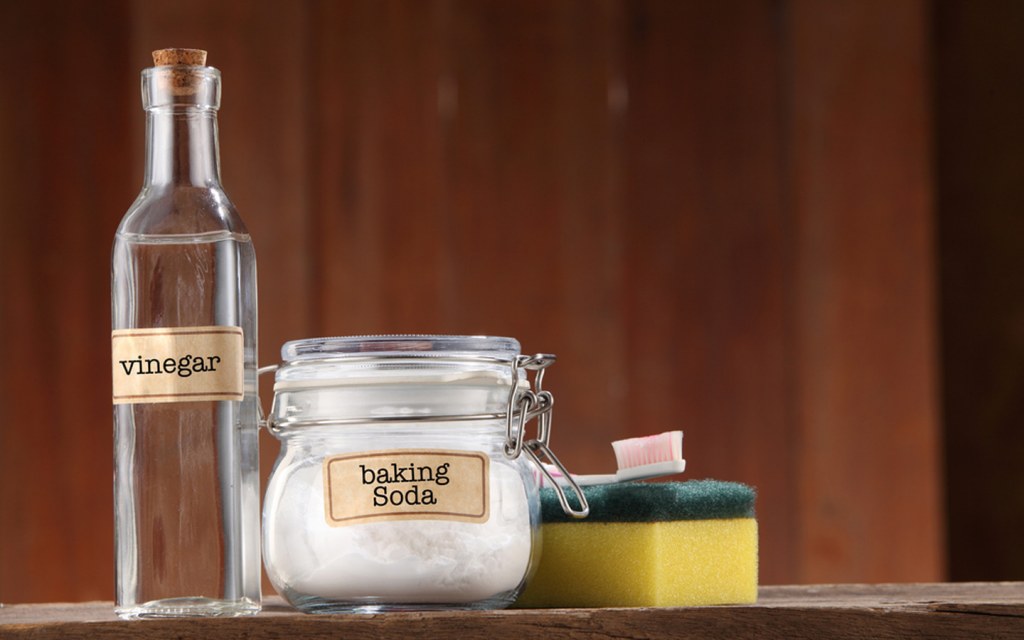
source: brendid.com
Vinegar is another excellent eco-friendly cleaning solution for ceramic, porcelain, or glass tile backsplashes. In a spray bottle, combine equal parts vinegar and warm water. There is no need to rinse after spraying the backsplash. A basic vinegar solution is an excellent daily cleanser, especially for preventing grease buildup.
Tough-To-Remove-Stains Cleaner
If the baking soda didn’t do the magic, try a harsh degreaser. Remember to check it on a small, unnoticed area first to guarantee it will not discolor your tile or grout, and then implement it very gently only to the greasy stain and comply with the rules, making additional attempts to secure it all gets rinsed away.
All-Purpose Backsplash Cleaner
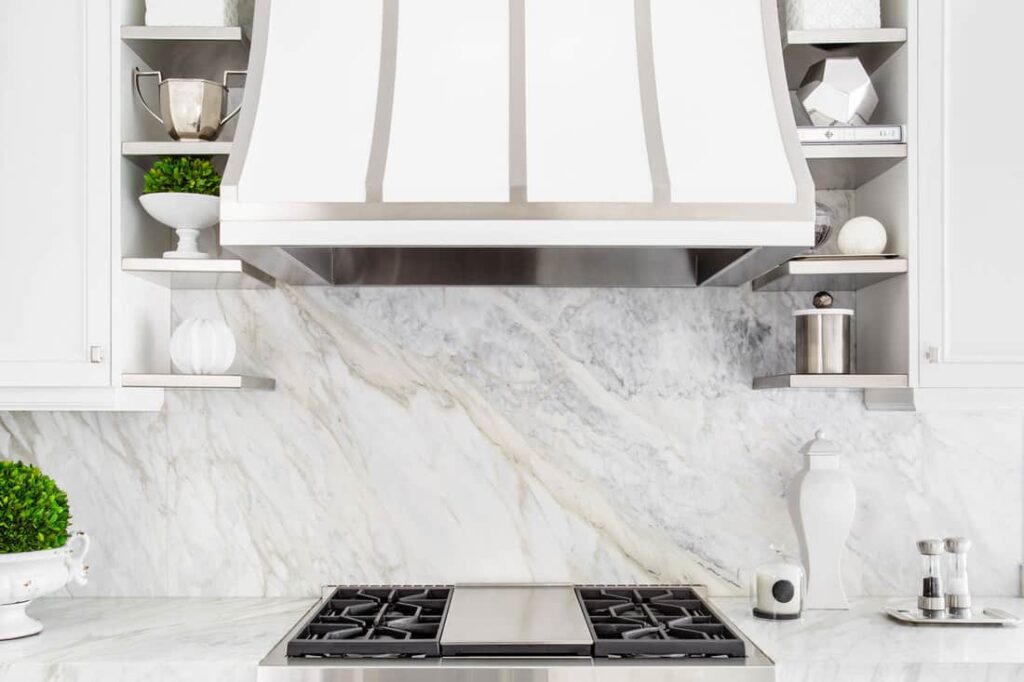
source: homedecorbliss.com
In a spray bottle, pour a half teaspoon of baking soda, a cup of water, and a few squirts of hand dishwashing detergent to make a safe backsplash cleaner that will remove most filth and grime. Sprinkle the cleaner on the backsplash and rub it clean with a cloth. Wipe with a wet cloth dampened with only water after that.
Stone Backsplash Tiles With Grease
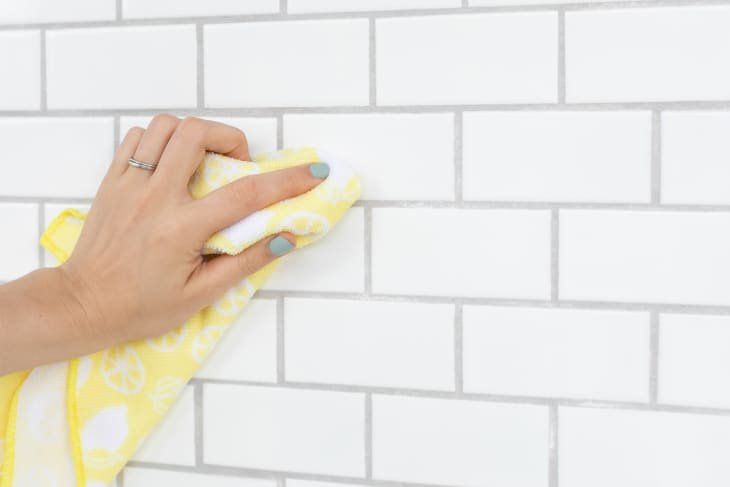
source: pinterest.com
If your kitchen backsplash is composed of natural stone, you’ll need to utilize stone-safe cleaning chemicals. You can use cleansers made specifically for that sort of stone.
If your basalt or other stone backsplash isn’t sealed, grease can become a bigger issue since it can seep into the stone. To ensure that the stone does not stain, always test any cleaning agents, even natural ones, in a hidden location.
Overall, dish soap mixed with warm water is a safe solution for a stone backsplash. Using a toothbrush or a comparable mild brush, scrub away the grease. With a clean, wet towel, brush away the soapy residue.
Focus On Grout Lines
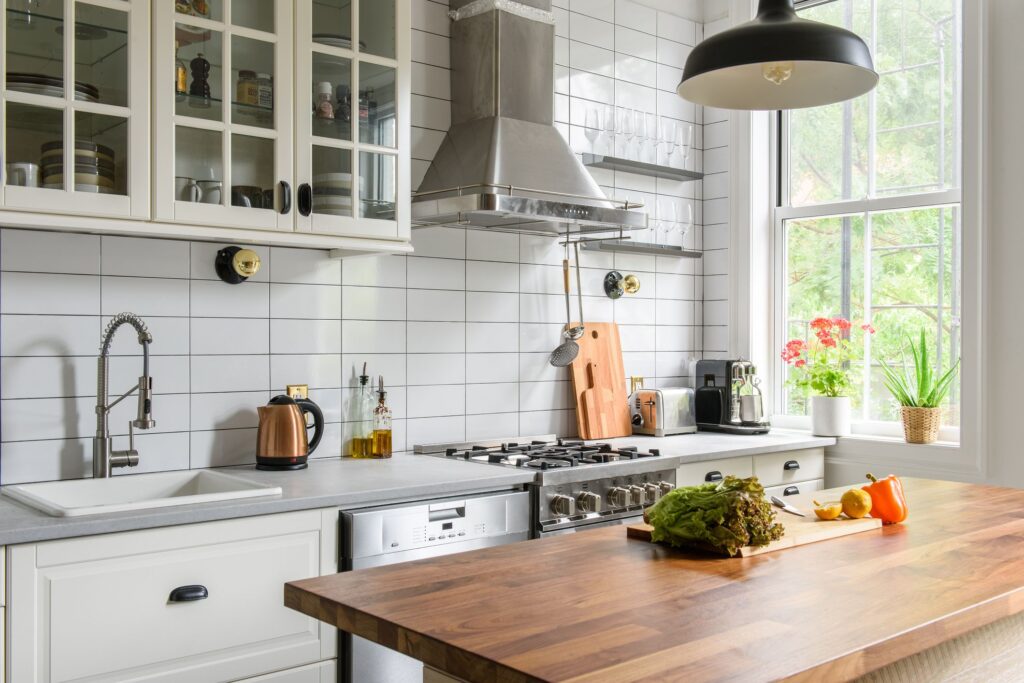
source: hearstapps.com
Backsplash tiles are relatively easy to clean, however, grout lines can be a different issue due to their porous nature. Return to the baking soda solution from the beginning of this article for stained grout. To add a little extra elbow grease, this time use a toothbrush designed exclusively for tile cleaning. When finished, use a new dampened towel to wipe down the grout.
Sealing the tile and grout lines will save you time and the need to scrub hard. The sealant forms a layered barrier on the surface of your grout, making it more difficult for contaminants to enter the holes.

